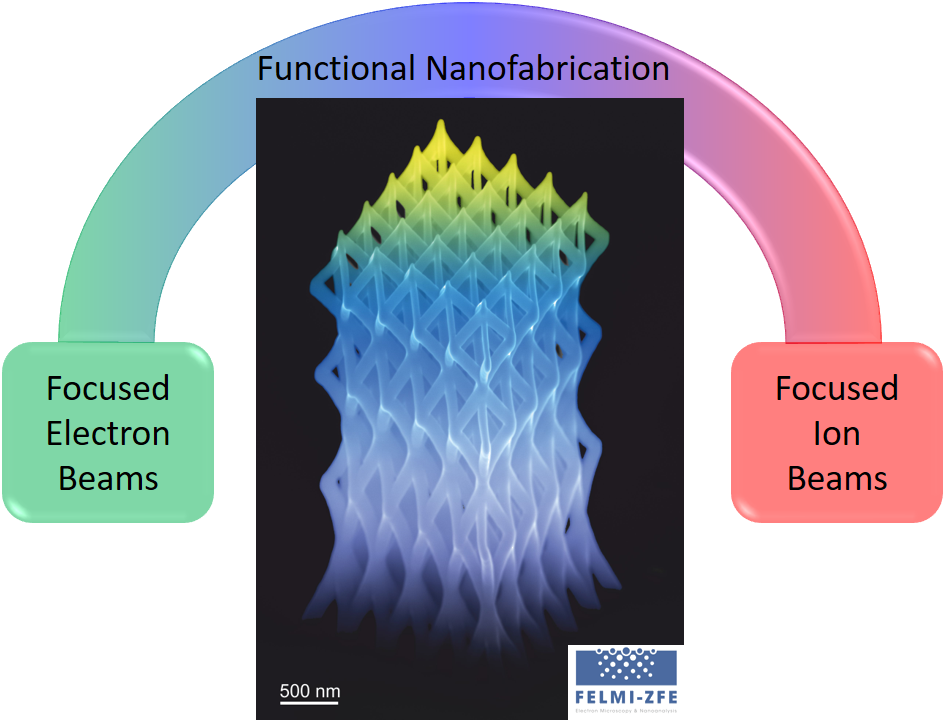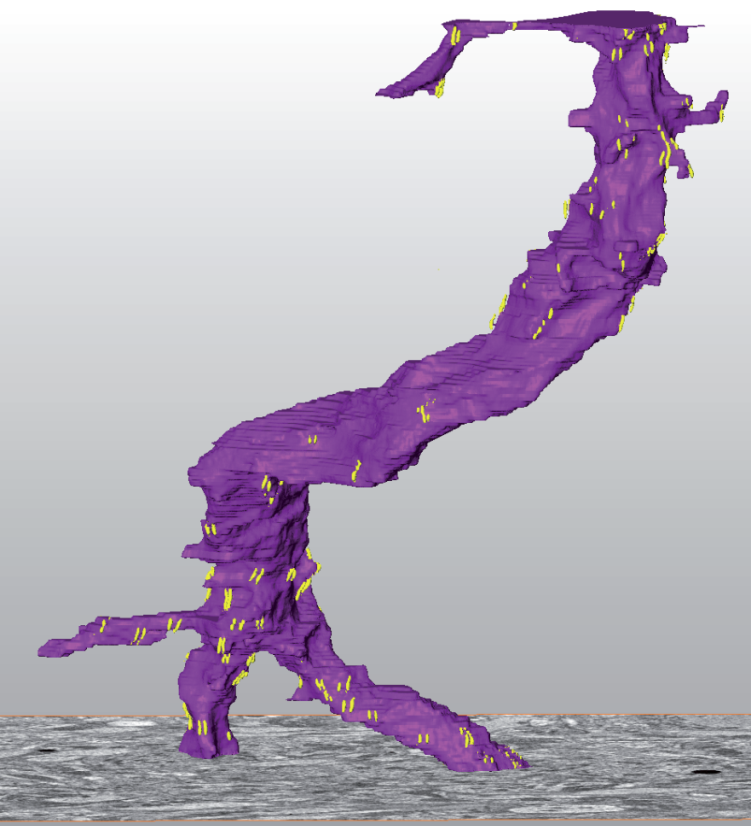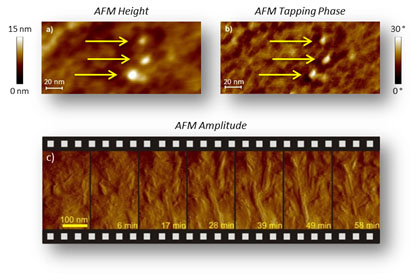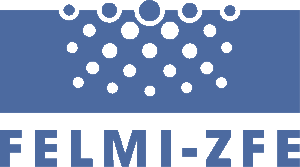The controlled fabrication of functional structures with feature sizes down to the nanoscale can be considered as a central gateway for current but in particular for upcoming applications in science and technology. Within that broad research field, additive direct-write manufacturing became increasingly relevant during the past decade[[1]], as that technology pool allows for unique applications, including the particular aspect of true 3D printing[[2]]. To pave the way for new developments, a basic understanding of physical and chemical processes together with technological aspects is indispensably needed.
Based on that awareness, this work-area focuses on the fundamental understanding of novel approaches with the aspiration to derive new concepts for real applications in science and technology[[3]]. While strongest focus is currently placed on 3D Nano-Printing (3DNP) via Focused Electron Beam Induced Deposition (FEBID)[[4]], we also use Focused Ion Beam (FIB) processing for additive and subtractive (nano)fabrication.
Aside of the scientific orientation, we work together with industry in the frame of the Christian Doppler Laboratory for Direct-Write Fabrication of 3D Nano-Probes (CDL-DEFINE), where 3DNP is used for research and development of novel application concepts for atomic force microscopy nano-probes.









